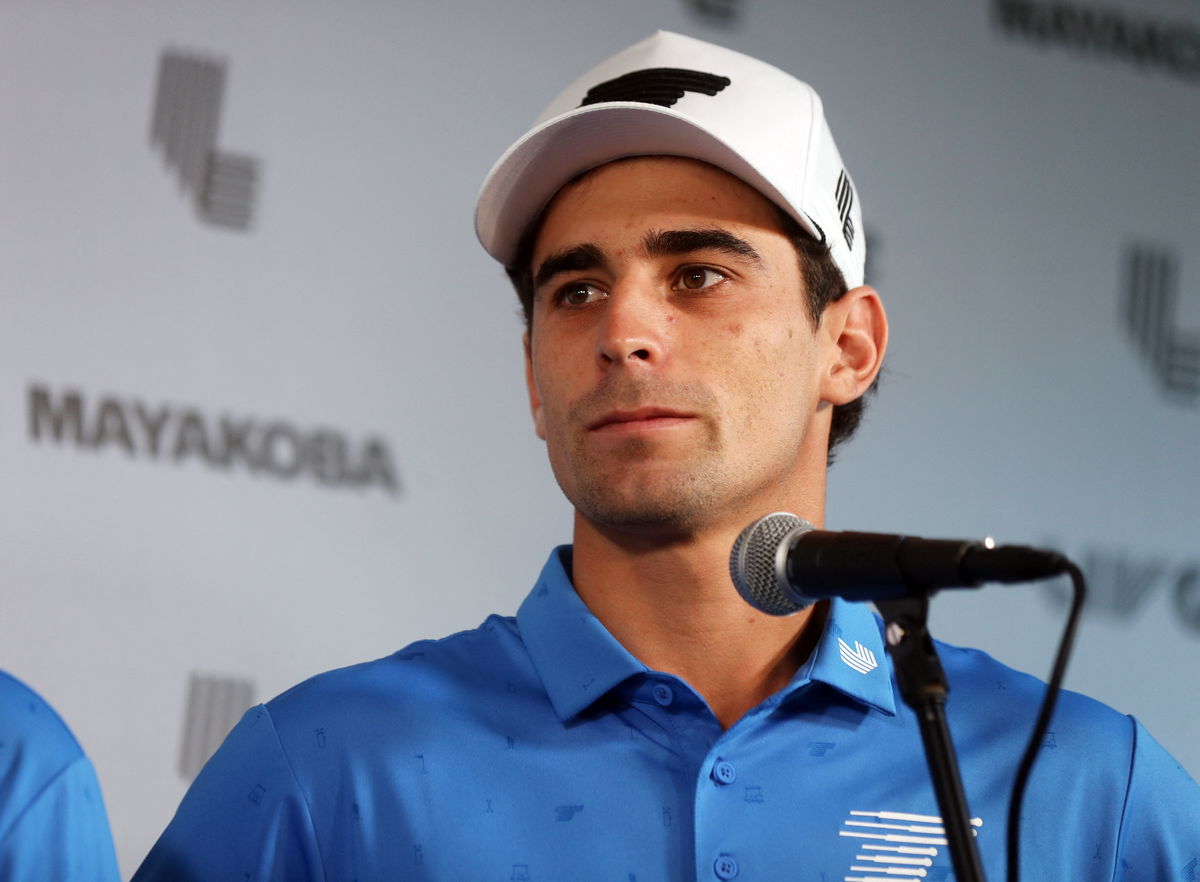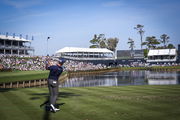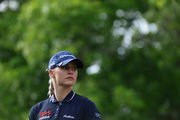
Reuters
Golf – LIV Golf Mayakoba – El Camaleon Mayakoba Golf Course, Playa del Carmen, Mexico – February 1, 2024 Torque GC’s Joaquin Niemann during the press conference REUTERS/Raquel Cunha

Reuters
Golf – LIV Golf Mayakoba – El Camaleon Mayakoba Golf Course, Playa del Carmen, Mexico – February 1, 2024 Torque GC’s Joaquin Niemann during the press conference REUTERS/Raquel Cunha
Something doesn’t add up with Joaquin Niemann‘s career. He’s absolutely crushing LIV Golf, winning one in every four events he enters. Yet for years, he couldn’t even sniff contention in major championships. His LIV Golf wins look impressive until you examine where he’s winning them. This glaring disconnect has data nerds and golf traditionalists asking the brutal question: Does LIV’s success really mean anything at all?
Watch What’s Trending Now!
The debate intensifies as Niemann prepares for the 2025 U.S. Open with bold claims about the benefits of LIV.
Top Stories
Pro Suffers Disqualification at PGA Tour Q-School After Several Players Withdrew Abruptly

2025 Vic PGA Championship: Prize Money, Winner’s Payout & More Explored

Brooks Koepka Takes up New Role Amid LIV Golf Exit Rumors Reaching Boiling Point

LIV Golf to Cut Ties With Veteran Pro After His PGA Tour Return Intentions Became Public

Charley Hull Opens Up on Traumatic Divorce from Ex-Husband for the First Time Ever

ADVERTISEMENT
Joaquin Niemann’s LIV Golf claims face analytical scrutiny
Niemann arrives at this week’s LIV event riding incredible momentum. He’s captured three victories out of seven events in 2025, already. His 25% win rate over the past 20 LIV starts dwarfs most tour statistics. Data Golf currently ranks him eighth globally among all professional golfers.
The Chilean golfer credits LIV’s schedule for his major championship breakthrough. “For me, being on LIV, I feel like it’s helping me a lot to better perform in majors. I feel more fresh,” he told reporters this week. He points to strategic advantages in LIV’s global calendar. “Obviously there’s a few weeks that we travel a little farther away, but I’ve been pretty smart and conscious of my recovery.”
Niemann specifically highlights the benefits of mental preparation over physical conditioning. “I feel like more than the game, it just takes a lot out of you mentally, and if you feel fresh in that way and my body feels good, I feel like it’s going to be a better week,” he explained. His recent T8 finish at the PGA Championship seemingly validates this approach.
ADVERTISEMENT

Reuters
Golf – LIV Golf Mayakoba – El Camaleon Mayakoba Golf Course, Playa del Carmen, Mexico – February 4, 2024 Torque GC’s Joaquin Niemann celebrates with the trophy after winning the LIV Golf Mayakoba REUTERS/Raquel Cunha
But not everyone buys Niemann‘s confidence. Data Golf co-founder Matt Courchene questions this narrative entirely. “If he’s beating up on guys at these LIV events and some of them are being played at, like, resort courses, I do think it’s fair to ask how we should value that,” Courchene told the Washington Post.
ADVERTISEMENT
Courchene acknowledges Niemann‘s legitimate talent while maintaining skepticism about venue quality. “When we’re trying to project how he’s going to play at a really difficult, championship course, yeah, these great results he has from LIV events might not transfer as well,” he noted. However, the analyst balances criticism with recognition. “But at the end of the day, he is playing well in all these LIV tournaments, and he’s pretty much playing up to the level of Bryson and Rahm in terms of strokes gained.”
This tension between player confidence and analytical reality drives deeper questions about competitive evaluation.
ADVERTISEMENT
LIV Golf evaluation drives analytics revolution
This Niemann debate reflects golf’s analytical evolution from basic stats to sophisticated venue evaluation. Modern analytics services now process multiple difficulty factors simultaneously. Course ratings, field strength analysis, and historical performance data create comprehensive competitive assessments.
Companies like Data Golf emerged specifically to address the challenges of cross-tour comparison. Their predictive models analyze how golfers perform in relation to the field strength. The system doesn’t discriminate based on Tour affiliation. Instead, it focuses on strokes gained metrics adjusted for competition quality and course difficulty.
Current analytics reveal stark differences between LIV venues and major championship courses. Traditional major venues feature 7,200+ yard layouts with firm conditions and deep rough. They demand precise shot-making under maximum pressure. LIV courses often emphasize spectator-friendly designs over championship-level difficulty. Only four of 14 LIV venues this year have hosted high-caliber professional events previously.
ADVERTISEMENT
The competitive format also adds complexity. LIV events feature 54 players versus 156 at PGA Tour events. Niemann faces elite competition weekly but in smaller, more predictable fields than major championships provide. He acknowledges these pressure differences himself. “I feel like the weekend gets pretty intense, and it’s pretty, in a way, easy to make a run if you’re not in the best position on the weekend,” he observed.
The evaluation challenge remains unresolved, though. Niemann‘s LIV dominance demonstrates world-class ability against proven competitors. His major championship improvement suggests genuine development rather than inflated statistics. Modern analytics offer evaluation tools that respect the competitive realities that distinguish circuit success from major championship performance. The ongoing debate reflects golf’s struggle to fairly assess talent across evolving professional landscapes.
ADVERTISEMENT
ADVERTISEMENT
ADVERTISEMENT

